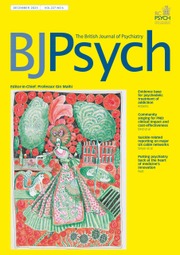I thank Professor Priest for further insights concerning the difficulty in obtaining sufficient statistical power to distinguish the early drug–placebo response. This is correct but the reason for the difficulty is mainly that the absolute difference between drug and placebo is initially small and when combined with typically low sample sizes the overall power to detect a true difference is insufficient. That said, if the aim of the study is to discover how early an effect is manifest there is no alternative to regular early measures.
Professor Priest then anticipates our next piece of work to which I previously eluded – examination of the trajectories of antidepressant response. He quite cleverly observes that a comparison of the slope of the response curves for the active drug and placebo is in effect a test of efficacy. It is also suggested that the response is often neither delayed nor steady but actually rapid (or perhaps more accurately ‘accelerated’). Allow me to illustrate this point further (Fig. 1). The rate of change of those taking placebo is poor compared with a hypothetical antidepressant with a ‘steady’ or ‘rapid’ onset. A delayed onset, as so often suggested, is not illustrated, but I expect readers will be able to sketch their own view of the delayed trajectory. In fact several ‘delayed’ paths are possible, depending on whether there is a catch-up with the steady path and if so, when.

Fig. 1 Depression rating against time since starting hypothetical antidepressant with rapid (—) and steady (· - · -) onset. HRSD, Hamilton Rating Scale for Depression; ·······, placebo response.




eLetters
No eLetters have been published for this article.